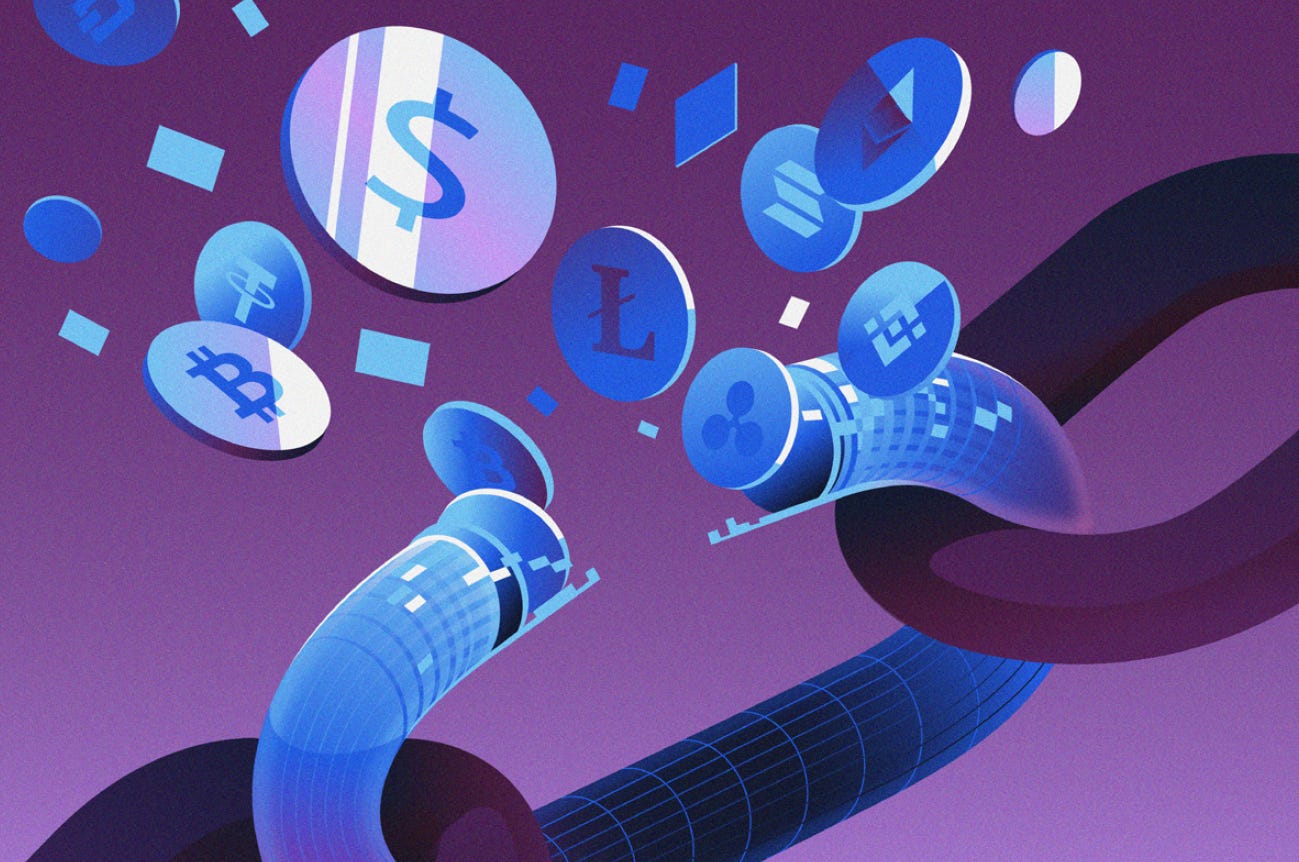Our weekly newsletter covers news, industry perspectives, and updates from the USBC ecosystem. Check out our last report here.
This week:
It’s blockchain’s “ChatGPT moment”
The Fed and FDIC green light crypto activities
Crypto firms want to be banks
Stuff happens
1. It’s blockchain’s “ChatGPT moment”
Last week, Citi published an in-depth report on blockchain’s potential inflection point, its so-called “ChatGPT moment” in 2025, in large part driven by innovation in digital dollars.
Here’s Citi:
Blockchain’s adoption is being driven by evolving regulation and a growing emphasis on transparency and accountability. This GPS report focuses on two key areas: enabling new financial instruments – such as stablecoins – and modernizing legacy systems.
With the tailwind of regulatory support and factors such as the increased integration of digital assets into incumbent financial institutions and favorable macroeconomics, we expect increased demand for stablecoins ahead.
…
Globally, government processes broadly remain a series of discrete, siloed steps, which are still dependent on large amounts of paper and manual work. Blockchain offers significant potential to replace existing centralized systems with streamlined operational efficiency, better data protection and reduced fraud.
Specifically, the report suggests that tokenized digital dollars will transform global finance. For banks, this can either be a generational opportunity or on the flipside, their potential “Kodak moment.”
Some stats from the report:
The stablecoin market will reach $1.6-3.7 trillion by 2030—stablecoins have seen 30x growth over the past 5 years.
By 2030, stablecoins could be the largest holder of Treasuries ($1 trillion+ in net new demand).
Even so, 75 percent of central banks are still planning on issuing a CBDC. The report suggests that 90 percent of stablecoin supply will remain USD-denominated.
Check out the full report
2. The Fed and FDIC green light crypto activities
Here’s Reuters (via Ron Oliveira):
U.S. banking regulators announced on Thursday they were pulling back several documents that urge banks to show caution when dabbling in cryptocurrency and related activities.
The Federal Reserve said it was withdrawing a pair of supervisory letters stipulating that banks should seek advance approval from regulators before engaging in crypto-asset and stablecoin activities.
In addition, the Fed joined the Federal Deposit Insurance Corporation and Office of the Comptroller of the Currency in withdrawing a pair of 2023 statements urging banks to be vigilant around crypto-related risks.
Under the prior guidance, regulators warned banks to be wary of volatility, legal uncertainty and liquidity risks when considering whether to provide crypto-related services or take on crypto companies as clients.
The move mirrors the OCC (via Can Akkus), when it similarly cleared a path for crypto activities back in March.
3. Crypto firms want to be banks
Here’s the WSJ:
A host of crypto firms including Circle and BitGo plan to apply for bank charters or licenses, according to people familiar with the matter. Crypto exchange Coinbase Global and stablecoin company Paxos are considering similar moves, other people said.
…
Some crypto firms are interested in national trust or industrial bank charters that would enable them to operate more like traditional lenders, such as by taking deposits and making loans. Others are after relatively narrow licenses that would allow them to issue a stablecoin.
World Liberty Financial, the Trump family’s crypto project, unveiled plans to launch a stablecoin called USD1 last month. It said the stablecoin’s reserves would be safeguarded by crypto custodian BitGo, which is getting close to submitting the bank charter application, people familiar with the matter said.
And here’s Matt Levine:
But the weirder story here is: If you are a crypto firm that wants a bank charter, do you have to do lending? If you are a stablecoin issuer whose entire business is (1) taking deposits and (2) parking those deposits in Treasury bills, do bank regulators want to give you a charter? Aren’t bank charters for banks that do financial intermediation? Will there be pressure for stablecoin issuers to become real banks, to take deposits and use them to fund loans? Will crypto companies that want to become banks have to be regular banks, not narrow ones?
This is a little funny because crypto is to some extent a reaction against traditional banking. Satoshi Nakamoto invented Bitcoin in part in disgust at the 2008 financial crisis. And cryptocurrencies are distinct from dollars in that a dollar fundamentally is a debt obligation of a bank, while a Bitcoin fundamentally isn’t; crypto is a form of non-debt money, a way to have money and payments and bank accounts without traditional banking. I wrote in 2023 that crypto “to some extent started as a backlash to fractional reserve banking and the shadow banking crisis of 2008, and by last year had matured to the point that it recreated both fractional reserve banking (but without regulation!) and a 2008-style shadow banking crisis.” But that is just the beginning of the story. Perhaps the future is that crypto will fully recreate normal banking, including bank regulation.




